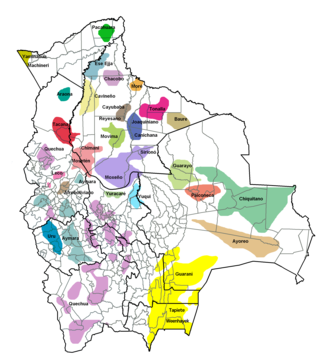Extinct language of Bolivia
.mw-parser-output .hidden-begin{box-sizing:border-box;width:100%;padding:5px;border:none;font-size:95%}.mw-parser-output .hidden-title{font-weight:bold;line-height:1.6;text-align:left}.mw-parser-output .hidden-content{text-align:left}@media all and (max-width:500px){.mw-parser-output .hidden-begin{width:auto!important;clear:none!important;float:none!important))You can help expand this article with text translated from
the corresponding article in Spanish. (October 2019) Click [show] for important translation instructions.
Machine translation, like
DeepL or
Google Translate, is a useful starting point for translations, but translators must revise errors as necessary and confirm that the translation is accurate, rather than simply copy-pasting machine-translated text into the English Wikipedia.
Consider
adding a topic to this template: there are already 5,022 articles in the
main category, and specifying|topic= will aid in categorization.
Do not translate text that appears unreliable or low-quality. If possible, verify the text with references provided in the foreign-language article.
You must provide
copyright attribution in the
edit summary accompanying your translation by providing an
interlanguage link to the source of your translation. A model attribution edit summary is Content in this edit is translated from the existing Spanish Wikipedia article at [[:es:Idioma canichana]]; see its history for attribution.
You may also add the template ((Translated|es|Idioma canichana)) to the
talk page.
For more guidance, see
Wikipedia:Translation.
Canichana, or Canesi, Joaquiniano, is a possible language isolate of Bolivia (department of Beni). In 1991 there were 500 Canichana people, but only 20 spoke the Canichana language; by 2000 the ethnic population was 583, but the language had no L1 speakers left.
It was spoken on the Mamoré River and Machupo River.[1]
Vocabulary
Loukotka (1968) lists the following basic vocabulary items for Canichana.[1]
| gloss |
Canichana
|
| one |
mereka
|
| two |
kadita
|
| three |
kaʔarxata
|
| tooth |
eu-kuti
|
| tongue |
au-cháva
|
| hand |
eu-tixle
|
| woman |
ikegahui
|
| water |
nese
|
| fire |
nichuku
|
| moon |
nimilaku
|
| maize |
ni-chuxú
|
| jaguar |
ni-xolani
|
| house |
ni-tikoxle
|
